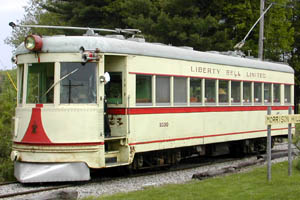
- Builder
- American Car & Foundry Co.
- Description
- High-speed interurban parlor car
- Secondary Use
- None
- Type
- Interurban Cars
- Year
- 1931
- Retired from Service
- 1951
- Acquired by the Museum
- 1951
- Fund
- 732
- Sponsor/Manager
- Tom Rudell and Ron Rudell
Lehigh Valley Transit Co. 1030
From Allentown, Pennsylvania
History
The Indiana Railroad was a major interurban operator in its namesake state, connecting the capital, Indianapolis, with other Indiana cities. The Indiana Railroad was formed in 1930 by a merger of several smaller Indiana interurbans. That year, the new railroad borrowed one of the Cincinnati & Lake Erie’s new, lightweight cars for some test runs. Impressed with the high speed of the car, the Indiana Railroad ordered 35 very similar cars from Pullman-Standard and American Car & Foundry. The cars were designed for speeds of more than 80 mph. One of the C&LE cars (later Cedar Rapids & Iowa City) No. 118 is also at Seashore. Built largely of aluminum, these lightweight cars preceded the streamliners on the steam railroads by a couple of years. The new cars were about half the weight of older, steel cars. American Car & Foundry built 14 cars (including No. 55) in a coach-lounge configuration with upholstered seats in a rear observation section. The other 21 high-speeds, from Pullman-Standard, were baggage-coach cars. The high-speeds ran from Indianapolis to Fort Wayne and to Louisville. In 1934, the Indiana Railroad converted one of its high-speed cars, No. 55, from a coach to a parlor car with lounge-type seating. The Indiana Railroad ended most service in the late 1930s. Of the lightweights, only Nos. 55 and 65 were sold for further use.
In 1939, the Lehigh Valley Transit Co. of Allentown, PA had acquired six of the C&LE lightweight cars. Then, in 1941, LVT acquired Indiana No. 55 to replace a former C&LE car which had been destroyed by fire. The LVT renumbered No. 55 to No. 1030. Although No. 1030 was operated as a regular service car, the parlor seating was retained at first, making 1030 a popular car with the regular riders. In 1949, LVT installed regular coach seats. LVT operated local service in and between the cities of Allentown, Bethlehem and Easton, and maintained an interurban route to Philadelphia called the Liberty Bell route. The 1000s were operated on this line, providing a fast, but rough trip to 69th St. on the west side of Philadelphia. The southern end of the line shared track with a suburban rapid transit operation known as the Philadelphia & Western, and like the North Shore cars, the 1000s were equipped with third rail shoes and door traps for that part of the trip. The LVT was probably the last example of a pure interurban, with passenger and freight traffic in interurban equipment, without railroad interchange.
Service on the LVT ended in 1951, and the 1000s were sold to a junk dealer who resold the body of No. 1030 to Seashore. No. 1030’s trucks and motors were not included, since they were wanted by the Philadelphia and Western for their cars. The junkman substituted the equipment from a former C&LE car, which turned out to be the one from the famous airplane race of 1930. No. 1030 was Seashore’s first car from outside of New England, beginning the museum’s national and international scope. Over the next 24 years, a group of Allentown area members would gather at Seashore every summer to work on the car, and a fundraising effort was begun to complete the restoration of the car for the nation’s bicentennial in 1976. Seashore restored the car to its LVT parlor car appearance. Car 1030 returned to service and was dedicated in memory of Howard P. Sell on members’ day in 1976. Regular operation of 1030 disclosed some issues with the car which are being taken care of as funding is available. The most obvious of these is a result of the substitute motors, which draw excessive current and are not matched to the accelerating resistance. The proper trucks and motors are on hand and will be overhauled and installed when funding permits.
Technical Information
- Seats: 29
- Control: 539A1
- Brakes: SME (M33)
- Compressor: HLF (15E12)
Trucks
- Number: 2
- Manufacturer: Cincinnati
- Model: ABC74D
Motor
- Number: 4
- Manufacturer: Westinghouse
Weight and Dimensions
- Length: 46’
- Width: 8’ 10.00"
- Height: 11’
- Weight: 50000 lbs.
Additional Images
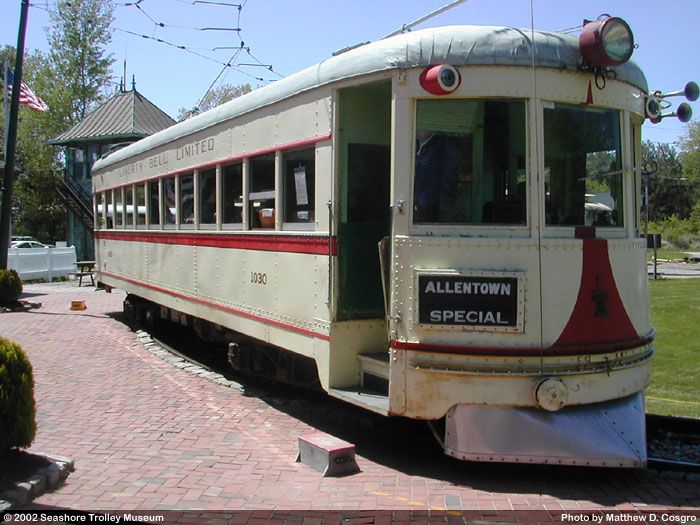
Matthew D. Cosgro 2002
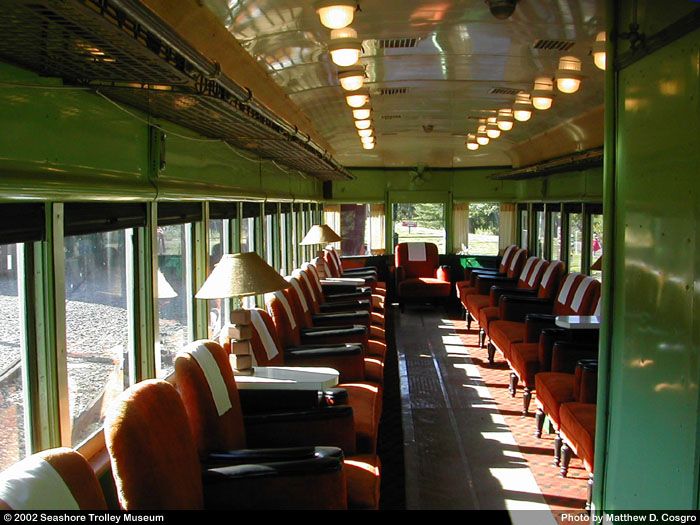
Matthew D. Cosgro 2002
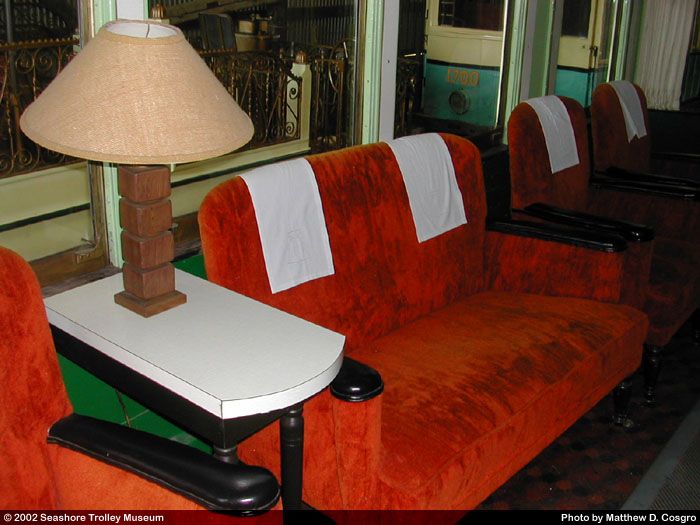
Matthew D. Cosgro 2002
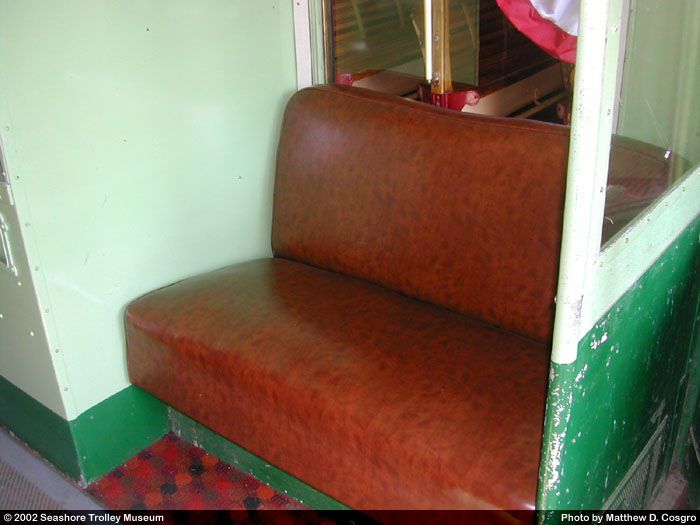
Matthew D. Cosgro 2002
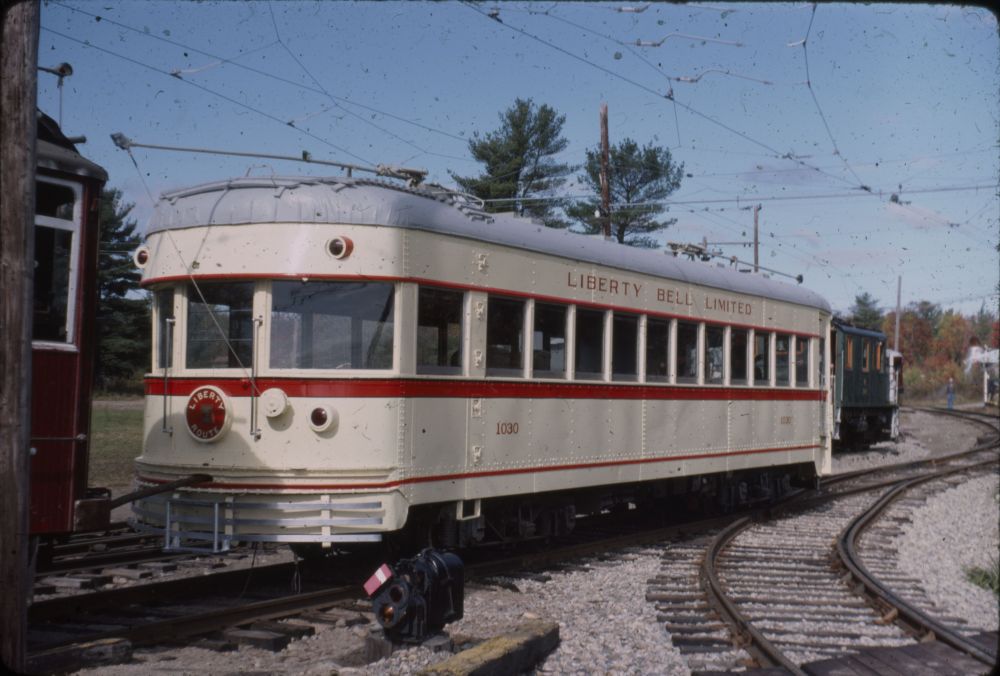
Roger Austin in June 1968

E. Edwards in Allentown on Sept 14, 1941
© 1998 - 2025 New England Electric Railway Historical Society. All Rights Reserved.